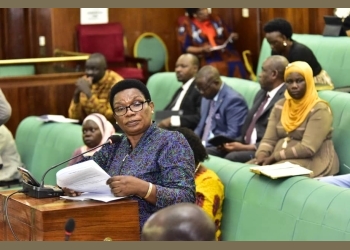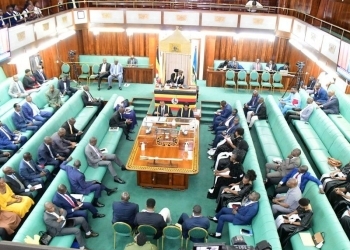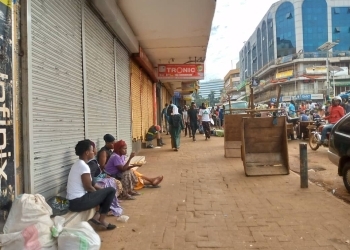
Uganda has been invaded by a second wave of desert locust swarms from Kenya, the Minister of Agriculture, Animal Industry and Fisheries Hon. Vincent Bamulangaki Ssempijja has said.
The desert locusts allegedly entered Uganda through Amudat district on Friday 3rd April 2020. The two swarms have further spread inland into Kumi, Katakwi, Otuke and Agago districts by Monday 6th April 2020.
Bamulangaki who was speaking to the media in Kampala on Tuesday, says that unlike previous swarms, these swarms comprise of immature adult desert locusts recently hatched in Kenya.
Following control by UPDF in Namalu Nakapiripiriti district, part of the swarm moved and settled in Kumi district in the parishes of Osera, and Akumu of Ongino sub county and Agule of Kumi Sub county and Agago as of yesterday 6th April 2020. UPDF was notified and control efforts undertaken
Meanwhile, another swarm spread from Amudat through Nabilatuk and settled in Ogongoja sub county in Katakwi district and the UPDF team at Olilim intercepted it and control efforts are ongoing. A splinter swarm further through Amuria, Abim and settled in Otuke district.
Uganda has previously recorded nine (9) huge swarms of desert locusts in the Northern and Eastern parts of the Country. These swarms were classified as mature locusts and did not cause significant damage to the vegetation cover. However, the eggs that were laid are expected to hatch into nymphs and young locusts that have high affinity for food. This may pose an eminent danger to food security and livelihoods.
Technical Surveillance Teams in the region have continued to respond to reports of desert locust egg-hatching in the Districts of Agago, Ngora, Sironko and Bukwo.
Government through the Ministry of Agriculture Animal Industry and Fisheries has undertaken various interventions to control the desert locusts’ invasion including; the procurement of appropriate chemicals for spraying the locusts. A total of 1,400 litres of Fenitrothion 96% ULV out of the 10, 000 litres that were ordered has so far been received from Twiga Kenya Limited. The 10,000 Ltrs of Fenitrothion 96% ULV has not been received due to limited Aircrafts flying out of Japan due to the COVID – 19 Challenge.
Government has also procured and dispatched to the affected communities 500 Motorised Spray Pumps, 2,000 Knapsack Spray Pumps and 2,000 sets of Personal protective gear. This equipment is being used by field teams. Ground control operations have been conducted in all the 24 districts to minimise the spread of mature egg laying desert locusts.
And, government has so far mobilised UGX 22.0 Billion from its treasury and various development partners to facilitate the implementation of the Desert Locust Control Plan. The additional UGX 16.18 Billion approved by Cabinet has not yet been received from treasury.
However, the minister says they still have a challenge of Nose Masks (N95) which are hard to find as there is a stiff competition for them since they are also being used to protect communities from Coronavirus.
“We are reliably informed that some of the areas in Kenya previously habited by desert locusts have newly hatched hoppers which may be headed to Uganda. There is an urgent need to engage the Government of Kenya on the possibility of joint operations for ground spraying to ensure that the newly hatched hoppers do not reach maturity and swarm into Uganda. Farming Communities in the affected communities are however encouraged to take advantage of the recent rains and plant crops to avert a possible food crisis” Minister Bamulangaki told the press.











